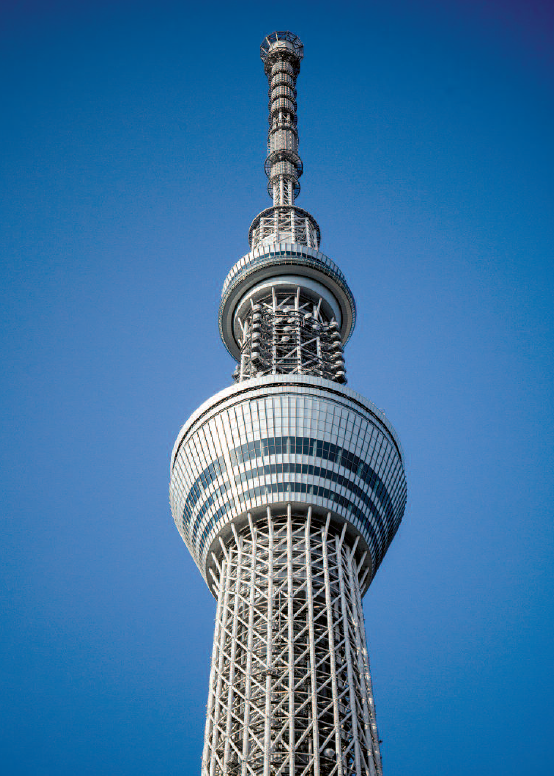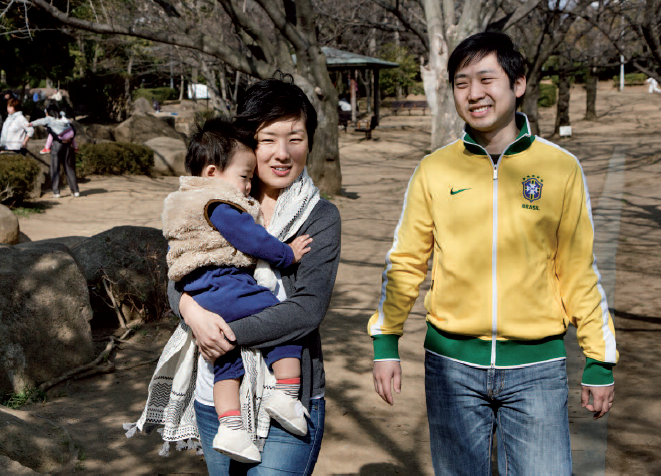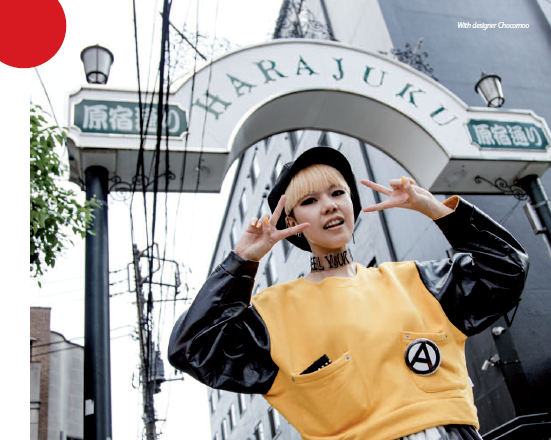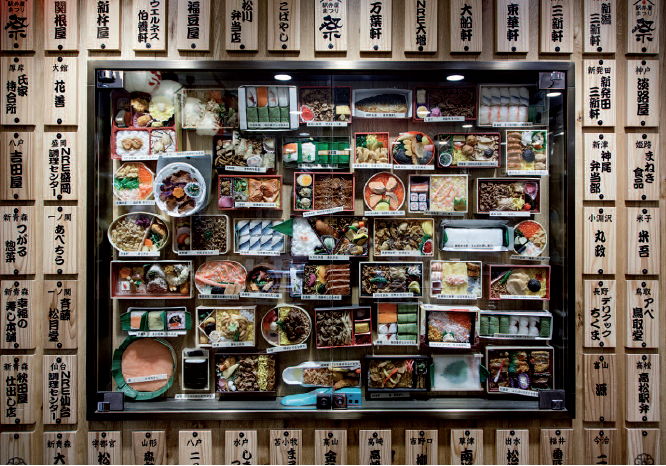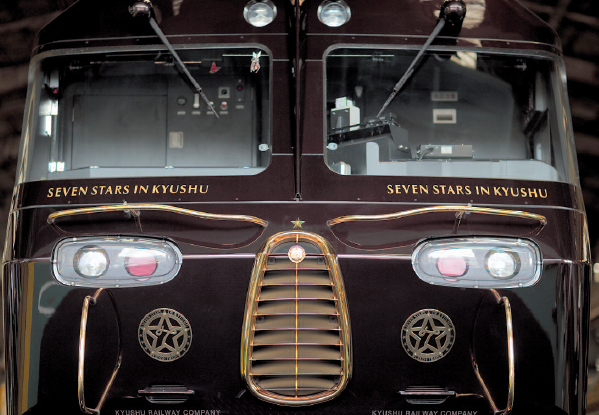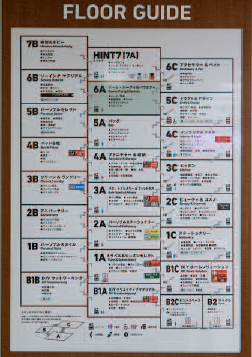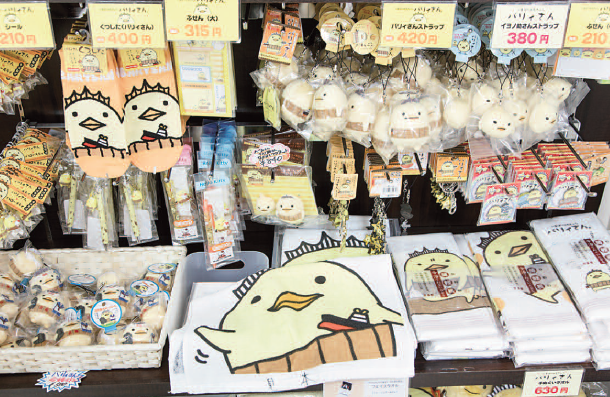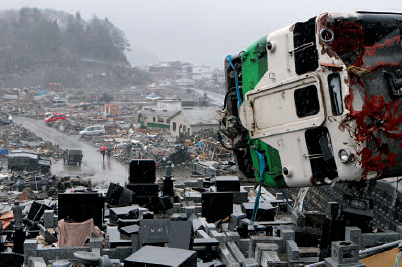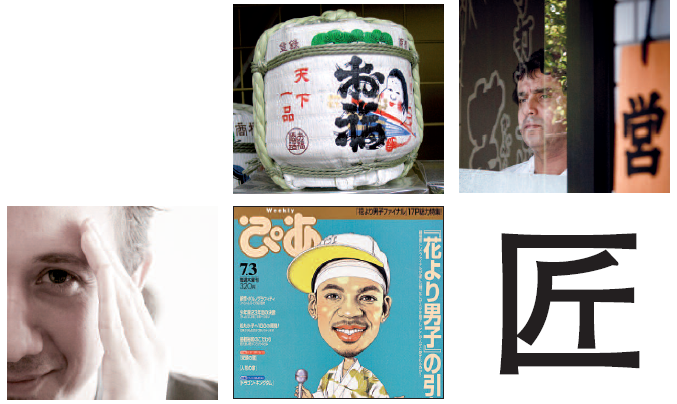
Many foreigners have settled in Japan over the past few decades and many of them have also worked there.
And the Japanese, who wish to learn more about their lifestyle and gain inspiration from it, have given them a warm welcome. There are also those who have moved to Japan with the desire to create something Japanese. The path they chose was harder, but their dreams finally came true. These are their stories. Some of them are famous. Others are not, and do not try to be. Some live in Tokyo. Others have chosen to live far away from the capital. Some were able to settle easily. Others have had a hard time before achieving recognition. But they all have two things in common: they are all sentimentally attached to Japan, and they have all succeeded in mastering a Japanese speciality; a real challenge for foreigners seeing how little inclined the Japanese are to believe that anybody except they themselves could possess the necessary sensibilities to brew sake, prune bonsais, make soba, or sing enka. For years gaikokujin, which literally means “individuals coming from outside nations”, have succeeded in being accepted by Japanese society. A few of them, such as Carlos Ghosn, manager at Renault-Nissan, have become role models, but their competency was not Japanese in nature. Patrice Julien, a former senior member of Tokyo’s French Institute, became one of the archipelago’s most famous foreigners in the 90s. He owed his popularity to being French, and his ability to advise the Japanese about Western lifestyles. Many like him could be cited, but those who have fully immersed themselves in Japanese culture and tradition in order to take up typical local professions are much rarer. Yes, a few of you might be thinking of the sumo wrestler. Indeed, over the past twenty years or the number of foreign sumotori has increased. They have come from Hawaii, Mongolia, and more recently Russia, the Baltic States, and even one from Finland. But they are an exception that proves the rule. It is not so easy for those working in other fields. Ask Philip Harper, Master Brewer of sake at Kinoshita brewery, or his British compatriot Peter Warren, who spent many years learning bonsai pruning techniques. Both of these men, as well as the Swiss Amen Godel who was taught by one of the greatest artists in Noh theatre, have gained recognition from their Japanese peers, who now accept them completely and consider their know-how as good as, if not better than, that of the Japanese. We met up with these gaikokujin who chose to rise to the challenge. Algerian, Turkish, British, American – they are all Japanese at heart. It is their story that we are going to tell.
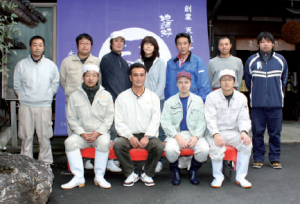 [GREAT BRITAIN] – Philip Harper, Mr. Sake
[GREAT BRITAIN] – Philip Harper, Mr. Sake
After arriving in Japan in 1988, this British man fell in love with the drink of the Japanese gods. He learned all he could about it, and became one of Japan’s most highly regarded sake producers.
Although the amount of sake drunk across the archipelago is decreasing (the Japanese prefer drinks from elsewhere), it continues to be an important part of Japanese culture because there is something sacred about it. All you need to be convinced of this is to go one of the many Shinto sanctuaries across the country. Sake is not only drunk for ceremonies and religious rituals, it is also placed on the ground and presented as an offering. During various national holidays (the New Year, Girls’ Day, etc.) celebrated throughout the year, sake is first of all offered as a welcome to the gods before being drunk during the meal. Whether signing an important contract, or when becoming part of a yakuza (Mafia) family, sake is used to mark the event. In the first case it is drunk out of a special cup to sacralize the formal agreement, in the second case, sake symbolises the blood relationship between the different members of the group. This drink is so Japanese that it is hard to imagine a foreigner becoming one of its best brewers, but such is the case. His name is Philip Harper, he comes from the south west of England, and he has discovered a passion for Japan and its rice and water based drink. Over the past twenty years he has been studying the language of Mishima intensively, and trying to unravel the secrets of making sake. This huge investment of time on his behalf is what led him to being accepted inside the small world of local brewers, who appreciate both his perseverance and his talent. “Philip loves sake, and he also loves traditional Japanese culture. He resembles a Japanese person, because he understands how we think, as well as our lifestyle. All of that can be found in his sake”, says the brewer for whom this British subject has become part of the family. After having proven himself in different breweries in order to master the different steps in making the drink of the gods, Philip Harper was “adopted” by the Kinoshita brewery in 2008.
Appointed master brewer (tôji), he now has responsibility for the entire production of the company, which was founded in 1842. “Philip has been with us for four years now. Three months prior to meeting him, our master brewer had passed away, and the person who was trained to take over didn’t feel capable of taking the responsibility of being in charge. I was very worried because it put the brewery’s existence in danger. I asked for advice from a specialist in Osaka, and was then introduced to this Japanese-speaking British man, who was very obviously interested in our culture. Nevertheless, I wasn’t sure that a foreigner could produce good sake. But he spoke with passion, and that is what convinced me. Since then, I have never regretted my decision,” explains Kinoshita Yoshito, the brewery’s manager. “I think the sake we now make is the best we have ever made. That is partly due to the quality of the rice, and good polishing. Of course, other breweries have their good qualities, but what also differentiates us is the atmosphere in the company. Around Philip, the whole team works admirably well. Every member at heart aims to produce exceptionally good sake,” he adds. It is a wonderful tribute to Philip Harper who spares no effort to do his best. The family-like atmosphere is very important, especially during the production period that goes on throughout October to March. During that time, the brewers live very much isolated from the world. The work is intense, and there is little time for family. Because of this, the Master Brewer’s role is all the more important, as he is the one who establishes a positive working atmosphere. Despite his foreign origins the British toji has made a name for himself amongst his colleagues, who behave exactly the same way towards him as they would towards someone Japanese. In this field hierarchy is important. The Master Brewer is the one who sets the tone and who ensures cohesion without which the sake would not turn out well. Since Philip Harper has been at the head of Kinoshita’s brewing, the company has been praised by lovers of sake, and rewarded with prizes. Nothing could please Philip Harper more, a man who has shown unfailing enthusiasm for this drink for so many years, a drink whose recent decline local producers have tended to neglect. “They think that the Japanese have always drunk sake, and will continue to do so. They haven’t understood that tastes evolve”, he complains. He can rest assured, however, that his expertise and knowhow are now recognized throughout the whole of the archipelago. It has triggered progress in the way sake is now regarded in Japan and has encouraged its export. As a connoisseur, and thanks to his efforts in finding the best way to describe it (by borrowing vocabulary from oenology), when he gets the opportunity Philip Harper is an ambassador for sake across the world. Master Brewer Harper speaks about his love for sake, whether in London, Los Angeles, or even New York.
 [TURKEY] – Halit Mizirakli’s well picked words
[TURKEY] – Halit Mizirakli’s well picked words
Being funny in a foreign language is no easy task. Yet it’s the challenge Halit Mizirakli, a sharp 35-year-old Turk, set himself when deciding to become a Rakugoka, a distinctively Japanese kind of storyteller.
When he first set foot in Japan in 2001, Halit Mizirakli would never have imagined becoming famous there one day, being appreciated and acclaimed by audiences as a rakugoka (a funny story teller) under the Japanese name Warattei Harito. “I started studying Japanese at university in Turkey. It enabled me to get a oneyear scholarship to go to Tsukuba University. And that’s where I discovered rakugo. When I got back to Istanbul, I decided to continue improving my knowledge of Japan before getting another scholarship from the Japanese government to study Japanology at Osaka University. As I had previously enjoyed rakugo, I decided to spend more time on it and Japanology helped because it embraces several fields in the social sciences. That’s when I immersed myself in it”, he says. Being in Osaka was a good opportunity to do that.
The capital of Kansai is famous for its sense of humour. It has many theatres in which the artists act out their plays with a pillow, a fan, or a piece of material as their only prop. While kneeling, they tell a story involving several characters. Their misfortunes always cause the audience, which veritably laps up the storyteller’s words, to burst out laughing. “My Japanese teacher at Tsukuba University often used rakugo in her classes, with stories by Yanagiya Kosan, a great rakugoka who passed away in 2002. She then encouraged me to go and see a show. It was love at first sight”, he remembers. He then undertook a long apprenticeship alongside various famous rakugoka, including Yanagiya Sankyô who gave him his stage name Warattei Harito. He learned that the actor is not performing a role at the start of the story. “One of rakugo’s characteristics is that the actor is situated between reality and fiction. It’s not easy to explain, but it’s the basis of the genre”, he explains. Indeed, the actor conditions the audience, and prepares it to discover the roles he will end up interpreting. “Sometimes the audience is a bit lost. People don’t know whether the actor is playing a role or not. They wonder if the last sentence was pronounced by the character or by the storyteller. Even though it may be of no great importance, it is part of the show. People love the combination of fiction and reality. They find it fun”, adds the young rakugoka, whose talent was rewarded in 2010 with the Grand Prize during a competition in Gifu (city in central Japan) that brings together some of the best performers in the field. Of course, to rise to such a level not only must you be a good actor, you must also master the language of Mishima to perfection. It is in this that Halit Mizirakli excels. He is glad to have gained recognition from his peers, but he expects the same from the audience. “The audience often comes to see a Turk on stage, and they do show me their support. I am thankful for that, yet still a little frustrated as an actor. I would like them to value the performance above all else. Sometimes I wonder whether they would pay more attention to the acting if I performed in Turkish. Seeing a Turk tell stories in Turkish might seem more natural to them”, he says with a hint of regret. Is this the impatience of youth? Probably, because he quickly adds that the relationship between the rakugoka and his audience takes time to develop. “When someone attends a rakugo show for the first time, they can’t yet fully appreciate the quality of the acting. If they return a few times after that, they will then find out whether they like it or not. I still lack experience”, he admits. Although he has not finished learning he is still proud of having achieved so much. “The first time I saw a rakugo show, I didn’t understand much of what was going on. Everybody was laughing except for me. Of course it was due to my level of understanding of the Japanese language, but also to my weak knowledge of Japanese culture. Now I understand Japanese humour and the Japanese people, and that’s huge. It’s a great opportunity to promote Turkish culture in Japan”, says Warattei Harito, a.k.a. Halit Mizirakli, a Turkish-Japanese person, or Japanese Turk, his face lit up by a broad grin.
 [USA] – Jero, new prince of enka
[USA] – Jero, new prince of enka
Originally from Pittsburgh, this young Black-American has learned to conquer his audience with tear-jerking songs.
There were millions watching television on 31 December 2008. Like every year at this time, they were glued to their TV screens watching the great annual song show on NHK, during which two teams of popular singers – the red and the white team – compete in interpreting a song. That night Jerome Charles White Junior, a.k.a. Jero, was on the show for the first time. He was not unknown to the Japanese, but he definitely conquered their hearts when he performed Umiyuki, a song he had released a few months before, dedicated to his Japanese grandmother. The young Afro-American’s tears moved the live audience on TV, as well as those watching the show at home. He is the son of two Black-Americans and, though his maternal grandmother is Japanese, Jero is not at all Japanese in appearance. The colour of his skin and the fact he looks like a rapper from Pittsburgh (his home city in the US) encourage you to believe that he could maybe launch a career as a rap singer or TV presenter in Japan, as others have done in the past. Before hearing him perform Umiyuki, nobody would have guessed that Jero could be an enka singer. For those who are unfamiliar with enka, it is a typical Japanese music genre in which the singers are often mature and wear a kimono or a costume. The songs lament lost love and nostalgia about ones origins. They are often sung in a low-pitched voice with vibrato for added emotion. “I started listening to enka when I was very young. My grandmother lived close by and, when I visited her, I would hear a lot of it. At the age of five I sung my grandmother an enka song for the first time after learning it by myself. She was very moved, and that’s when I decided to do my best to become an enka singer and make sure my songs would always make my grandmother smile”, Jero remembers with emotion. Recalling his grandmother is what prompted the deep emotion experienced by the singer and his audience during the NHK show in 2008.
The audience realized that appearances can be deceptive, and that hiding beneath his unconventional enka style was a performer with true Japanese feeling. His first contact with Japan was when he was fifteen. “I was representing the US in a Japanese speech competition. I came back later as an English teacher. It wasn’t my cup of tea, but I knew I had to get through that to reach my goal. Making a dream come true is never an easy thing to do. When I was lucky enough to become an enka singer, I knew I still had many barriers to overcome but that, in the end, all the effort would be worth it.” Hearing Jero speak with such humility, despite his great success, you can feel how heavily influenced he is by Japan. He has sold hundreds of thousands of CDs and made the front cover of many magazines, but he still acts as if he needs to prove himself. That’s probably also why he is so well accepted in Japan. “It was never a problem being a foreigner. I think it helped. Of course, I surprised a few when I started. They were curious, so they made the effort to listen. And when I told them my story, they continued to follow me”, he adds. His love for his Japanese grandmother and his indirect cultural heritage are what touched the audience. Jero realises that, but still it surprises him. “I didn’t think I would be so successful and that the Japanese would show so much affection. Nevertheless, I will never be Japanese, and don’t wish to be. I was born American. For the most part of my life I’ve lived in the States. But I am proud of my Japanese heritage, which has allowed me to make my dream come true”, he explains. “I want to stay myself, that’s also why I didn’t adopt the traditional enka singer look. If I had walked out on stage in a kimono, I don’t think people would have taken me seriously. By dressing in my American clothes I preserve my identity. And at the same time, I think I contribute to giving enka a younger image, and I hope that will allow a younger audience to become interested in it. What characterises enka are the lyrics. Often melodramatic and profound, they are also very poetic. They can’t leave you indifferent if you really do listen to them”, says the young singer, aware that he is defending a piece of Japanese cultural heritage. It’s not surprising that he was able to move so many Japanese with his honesty and simplicity on 31 December 2008. Just over three years later, he is still working with the same youthful desire to reach perfection.
Although he is completely aware of how hard it is to export enka (“the deep meaning and subtleties would be lost in translating the lyrics,” he says), Jero has not given up on the idea of presenting this genre outside Japan. In the meantime, you can take a look at his discography on his website www.jero.jp
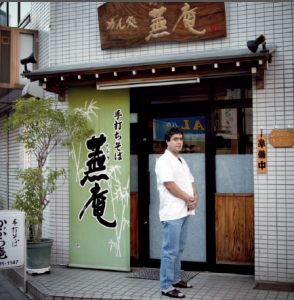 [ALGERIA] – Lakhdar Belouazani’s soba
[ALGERIA] – Lakhdar Belouazani’s soba
Based in Japan for twenty years, an Algerian chef, thanks to his talent and his great generosity, has progressively made his way into a very exclusive circle.
Much can be understood from someone’s expression, and when Lakhdar Belouazani looks at you, you feel something intense. In his eyes you can read all the determination and the energy he had to summon up to succeed in becoming one of Japan’s great soba masters; he is the only foreigner to be part of this very exclusive profession. “It has to be in your heart”, explains the forty-nine year-old cook, who waited many years for recognition. “I opened this restaurant nineteen years ago. Time was key, a lot of time was needed in order to gain people’s trust”, he adds. To begin with, he had to be accepted in the district. “At first, it was very hard. Just like my neighbours, I would sweep outside my restaurant. All we would say was hello. I felt like an intruder. It was quite a difficult period. It was hard to accept the way people would keep away from me. But I came to understand that it was also part of the learning process. Being married to a Japanese woman, and with two children going to school in the area, was not sufficient; I still needed to prove myself. And that can only be done with patience”, he says. He worked with Japanese people for many years in France so he knows what he’s talking about. “I was born in Algeria, but bought up in France. After a few small jobs, I ended up being hired by a Japanese restaurant in Paris. That is where I met my wife, and where I learnt the basics of Japanese cuisine”, explains the owner of Kabura-An. Yet culinary recognition was a long time coming. It is maybe because buckwheat noodles are part of the Japanese’ tradition of everyday life that people displayed such reservations towards him. The recipe for making soba noodles appears so easy: water, a pinch of salt, and flour; three common ingredients that nevertheless require a special know-how that takes time to acquire and finally determines whether one will be accepted by local customers. “Some Japanese eat soba at least once a day. Others eat them two or three times a day, so they can be very difficult to please. You can make good soba yet spoil the soup. And, in that case, the judgement is harsh. It’s all about balance. And to get that balance you need to have travelled throughout the whole of Japan and tasted hundreds and hundreds of soba. That’s what I did. And that is how I make better soba than many Japanese people now. But, again, you need to feel it in your heart. If your heart is in it, the soba will be good”, Lakhdar Belouzani reminds us.
The customers are never wrong. Although his restaurant is in Kawasaki, twenty kilometres to the south of Tokyo, at the very end of a shopping street near to Musashikosugi station, the chef welcomes a very diverse clientele ready to travel a great distance to get to taste his delicious yuzu soba – a dish made with a citrus fruit that is related to the lime. “I have a web site, and the media have often talked about me over the past few years,” he claims. But what works best is kuchikomi, word of mouth. “People want to know where they can eat good soba. And my restaurant is often quoted. But I still try to remain low key”, he adds. One feels he is a man of great humility, with a desire to satisfy all those who enter his restaurant. “My customers are between five and ninety years old. They are happy to come here, and that is what is essential to me. I couldn’t care less about all the rest, even the Michelin guide. My customers are regulars. Some come every week. And when I’m on TV, they stay away, sometimes for up to two or three weeks. They don’t like the publicity. They worry about their tranquillity. And that is part of the soba world. It’s a bit like a ritual. They need to be in a relaxed state of mind to eat”, stresses Lakhdar Belouazani, who would nevertheless like to increase the number of his customers. He serves fifty to sixty covers a day but “some days I only serve fifteen. With the crisis, people don’t eat out as often. It’s been a little harder over the past five to six years.” The situation means he cannot plan to expand his activities in Japan. He would like to develop something in Algeria, his homeland. Yet he seems deeply attached to this district. He has lived here for twenty years and has invested a lot in it. It was here that he first received recognition. And, although things are not always easy, Lakhdar Belouazani has faith in soba. “It’s all in your heart”, he says again. “Another cook can use the same ingredients without accomplishing the same dishes as I do, because in every soba there is a part of yourself.” With such a warm heart it is easy to understand why Kabura-An’s owner’s soba is so delicious and appreciated by connoisseurs.
Before going to Kabura-An, Lakhdar Belouazani’s restaurant, we advise you to check on the website or call to make a reservation. 044-711-1147 – www.geocities.jp/bel_kaburaan 485-10 Imai Minamichô, Nakahara, Kawasaki 211-0064
Odaira Namihei
Photo: Jérémie Souteyrat

